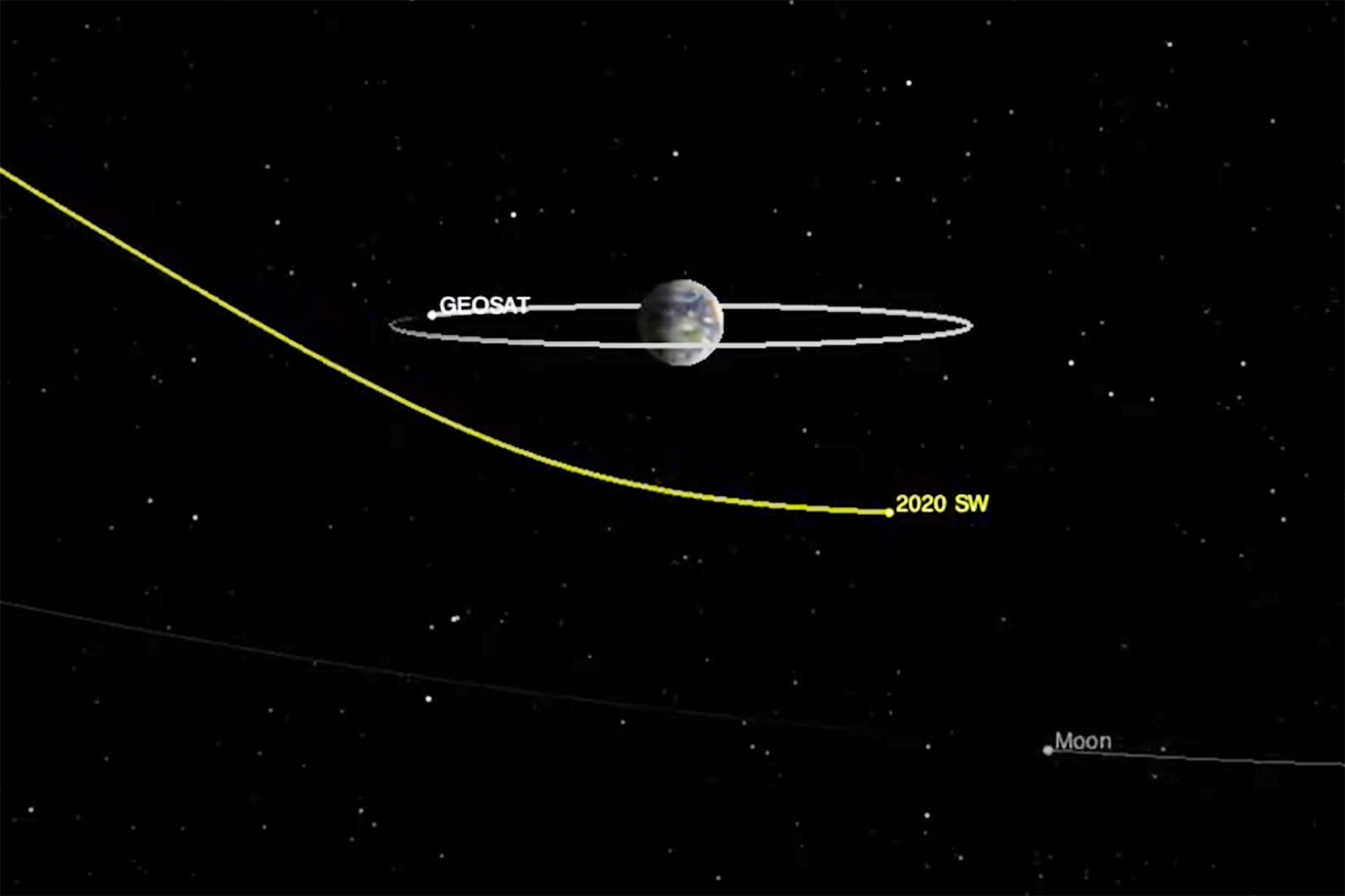Bus-size asteroid to zoom by Earth, ducking below satellites
An asteroid the size of a school bus is headed our way, but NASA says the space rock will zoom safely past Earth on Thursday

Your support helps us to tell the story
From reproductive rights to climate change to Big Tech, The Independent is on the ground when the story is developing. Whether it's investigating the financials of Elon Musk's pro-Trump PAC or producing our latest documentary, 'The A Word', which shines a light on the American women fighting for reproductive rights, we know how important it is to parse out the facts from the messaging.
At such a critical moment in US history, we need reporters on the ground. Your donation allows us to keep sending journalists to speak to both sides of the story.
The Independent is trusted by Americans across the entire political spectrum. And unlike many other quality news outlets, we choose not to lock Americans out of our reporting and analysis with paywalls. We believe quality journalism should be available to everyone, paid for by those who can afford it.
Your support makes all the difference.An asteroid the size of a school bus is headed our way, but NASA says the space rock will zoom safely past Earth on Thursday.
The newly discovered asteroid will come within 13,000 miles (22,000 kilometers) of Earth, well below many of the communications satellites orbiting the planet, scientists said this week. The closest approach will occur Thursday morning over the southeastern Pacific Ocean.
Once it’s gone, the asteroid won’t be back to Earth's neighborhood until 2041.
Scientists estimate the asteroid is between 15 feet and 30 feet (4.5 meters to 9 meters). By asteroid standards, that’s considered puny. Asteroids of this size hit Earth’s atmosphere and burn up once every year or two, said Paul Chodas, director of the Center for Near-Earth Object Studies at NASA’s Jet Propulsion Laboratory. There could be as many as 100 million of these little asteroids out there.
The real threat are considerably bigger asteroids. The good news is that these are easier to spot much sooner than just a few days out.
Asteroid 2020 SW, as it is known, was discovered last Friday by the Catalina Sky Survey at the University of Arizona in Tucson.
___
The Associated Press Health and Science Department receives support from the Howard Hughes Medical Institute’s Department of Science Education. The AP is solely responsible for all content.